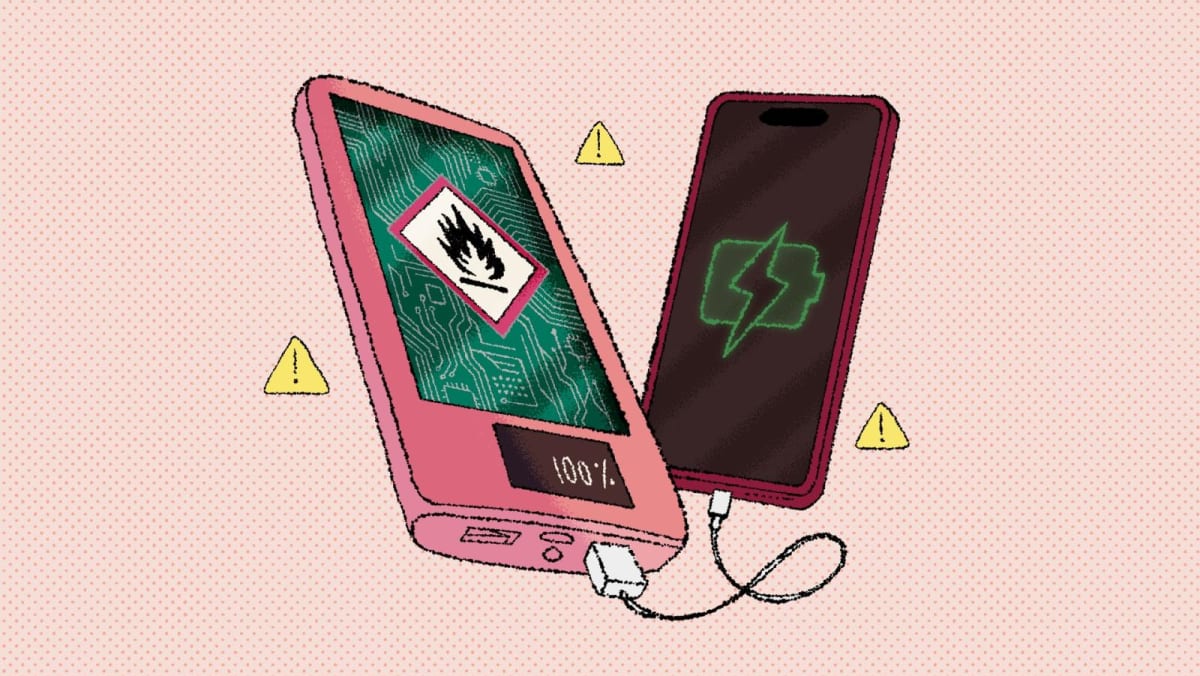A quick scan of news headlines shows her experience is definitely not an isolated case. Chinese newspaper Shin Min Daily News reported that a power bank exploded while it was charging on Jul 5 at about 11am, in a four-room flat at Block 339B Kang Ching Road in Jurong West.
In response to queries from CNA TODAY, SCDF said reported power-bank fires have risen from just six in 2020 to 13 in 2024.
Moreover, fires involving active mobility devices such as personal mobility devices (PMDs), personal mobility aids and power-assisted bicycles continue to increase.
SCDF received 67 calls for fires involving active mobility devices last year, a 21.8 per cent increase from the 55 calls in 2023.
The rise in such fires here, along with other high-profile battery fire incidents globally, has cast a spotlight on the risks associated with lithium-ion battery products, which pack a powerful punch for their size.
Growing safety concerns have prompted regulators and airlines worldwide to tighten regulations on their use.
In February this year, a burning power bank filled a plane with smoke – a Batik Air flight from Johor Bahru, Malaysia, to Bangkok, Thailand – and this was just one of several mid-flight incidents involving power banks in recent months.
As a result, several airlines, including Singapore Airlines and Scoot, now ban the use and charging of power banks on flights.
More recently, the Civil Aviation Administration of China said power banks can be taken on board domestic flights within China only if they are clearly marked with the official China Compulsory Certification logo. Power banks that have faded or illegible labels of the certification or are part of a product recall will also be barred.
E-scooters and e-bikes are also banned on public transport in some countries such as the United Kingdom over concerns about fire risks.
Battery fires can break out for various reasons such as overcharging and manufacturing defects, experts told CNA TODAY.
However, considering the sheer number of consumer electronics – from power banks, smartphones and laptops to power-assisted bicycles and PMDs – the experts noted that serious incidents are extremely rare relative to the number of devices.
LIGHTWEIGHT, HEAVY-DUTY
Lithium-ion batteries are rechargeable batteries that store and release energy when a liquid or gel moves lithium ions between electrodes within the battery cell.
Dr Denice Durrant, director of engineering and data science at UL Standards & Engagement (ULSE), a global safety organisation based in the United States, said: “They are impressively efficient and long-lasting, which is why they increasingly power many of the devices we rely on daily, including smartphones, power banks and electric vehicles.”
However, the batteries can catch fire. Apart from overcharging and manufacturing defects, other reasons include overheating, short-circuiting and physical or mechanical damage.
Exposure to high temperatures and a phenomenon known as thermal runaway can also spark a fire.
Thermal runaway occurs when an electrochemical cell’s temperature rises uncontrollably due to self-heating, continuing to release electricity as it produces heat faster than it can cool down.
Because lithium-ion cells are densely packed in a battery, this heat can spread to adjacent cells, triggering a chain reaction. The result can be a rapid increase in temperature across the battery pack, potentially leading to smoke, fire or even explosions.
Dr Sheikh Mohamed Anees, a senior forensic scientist at the Home Team Science and Technology Agency (HTX), said that batteries undergo wear and tear through repeated charging and discharging cycles over time.
“This can lead to internal defects, increasing the likelihood of thermal runaway. A common indicator of ageing is battery bloating – though this is not the only warning sign.”
